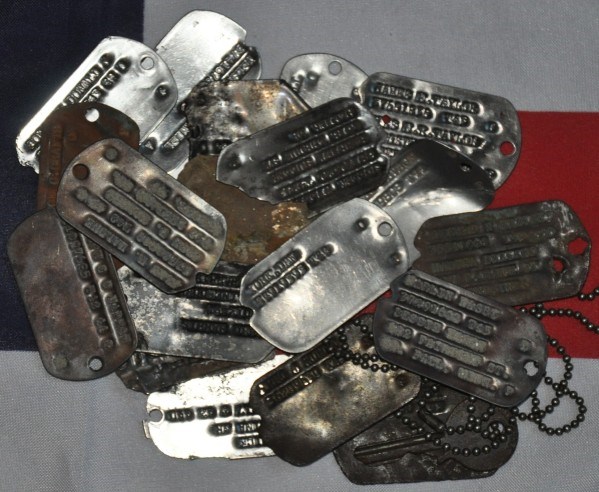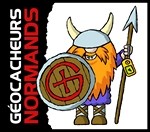Pendant la Bataille de Normandie Les "Dog Tag" ont permis d'identifier de nombreux soldats morts au combat.
During the Battle of Normandy, "Dog Tag" permitted to identify many soldiers Killed In Action.

Dans l'armée américaine, les plaques d'identité militaire renseignent le nom de famille, le prénom, le numéro d'identification militaire, le groupe sanguin et la religion.
Ces informations sont marquées sur un petit morceau de métal qui est porté sur une chaîne en métal autour du cou. Pendant la Seconde Guerre mondiale, la date de la dernière vaccination antitétanique du soldat a été ajoutée. La plaque est principalement employée pour l'identification des morts et des blessés.
Le port des dog tags est exigé à tout moment par les soldats sur le terrain. Elles contiennent deux plaques d'information et sont conçues pour se diviser facilement. Une est portée sur une chaîne autour du cou, la seconde sur une chaine beaucoup plus petite attachée à la première chaine. Ceci permet à l'une des plaques d'être rassemblée pour identification tandis que l'autre demeure avec le corps quand la bataille ne permet pas à la personne d'être immédiatement récupérée.


In the U.S. Army, the identificaton tags inform the family name, first name, military identification number, blood type and religion.
This information is marked on a small piece of metal which is worn on a metal chain around his neck. During World War II, the date of last tetanus immunization was added. The plate is mainly used for the identification of dead and wounded.
Wearing dog tags is required at all times by soldiers in the field. They contain two information plates and are designed to be divided easily. One is worn on a chain around the neck, the second on a much smaller chain attached to the first chain. This allows one of the plates to be assembled to each other while identification remains with the body when the battle does not allow the person to be immediately recovered.


